On Sheridan Street just south of the Newman University Wilkins Soccer Field, passersby can see dozens of suspended white gourd houses for a special breed of migratory birds: purple martins.
The painted gourds were put in place by Rev. Father Tom Welk, who has lived in the brick house on Sheridan for nearly 30 years.
A lifetime love of birds
Welk’s love for birds and “any kind of winged creature” stems back to his days as a seventh grader in North Dakota.
“The teacher had us research and identify ducks and I kind of got the bug that way,” he explained. “I kept that interest in birds when I was in graduate school. There were three of us who actually worked for the federal government, banding birds.”
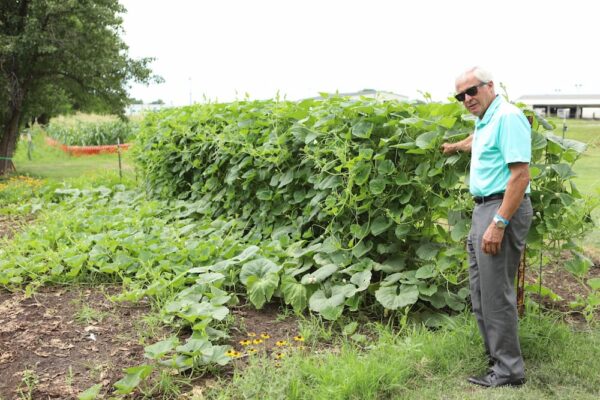
As a student at the University of Dayton, Ohio, Welk banded birds, recorded field notes about each bird tagged, then sent the information to the National Fish and Wildlife Office in Washington, D.C., to help document and study migration patterns.
“Up until that time, in the sixties, there wasn’t a whole lot of information about small birds and where they go in the wintertime,” Welk said. “The information we gathered by tagging birds could also keep track of the population, whether it was declining or growing.”
Purple martins have it tough, Welk explained, thanks to two species that like to squat in their nests.
In the late 1880s, amateur ornithologist Eugene Schieffelin of New York thought it was important that birds from Shakespeare’s literature were represented in the United States. He took it upon himself to introduce the English sparrow and European starling by releasing them in Central Park.
There, they “just took over the country,” Welk said.
“There are millions and millions of (sparrows and starlings) around today,” Welk said. “Like the purple martins, they are also cavity nesters.”
When purple martins, a bird of the swallow family, migrate to Brazil in August, the sparrows and the starlings take over the purple martins’ established cavity nests. When the purple martins return in March, there are no nesting places left for them.
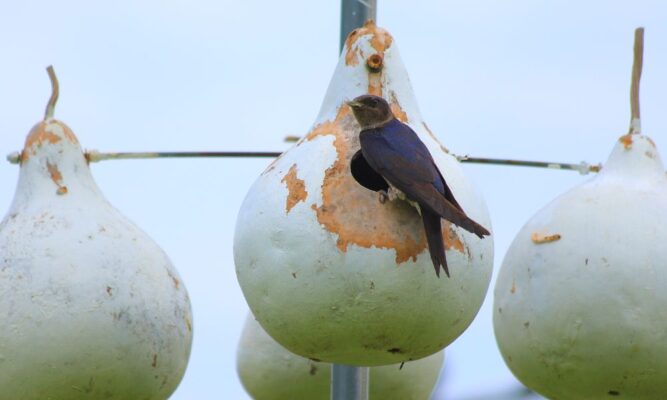
“The birds always come back to the same location when they establish a colony, and what’s really bringing purple martins back are people like myself,” Welk said. “I have 142 houses up and they’re all over the place out here. And I have to fight the sparrows and the starlings constantly.”
Gourds make great homes
Anyone can purchase a manufactured house for purple martins, but the blackish-blue birds seem to prefer gourds. Welk said one theory for this preference is that the Native Americans liked to have purple martins around their establishments. After enjoying tasty gourds in their meals, the Native Americans hollowed out the vegetables and hung them to accommodate their feathered guests.
In Welk’s case, the materials for the purple martin houses came straight from his own garden, where he grows everything from corn, garlic and tomatoes to squash, cucumbers and potatoes.
Although it can take some work to maintain the gourd houses — one must clean them out, paint them white to reflect the sunlight and replace them with new gourd houses when necessary — they can last up to 15 years.

“The purple martins also like to be around people,” Welk said. “The theory, again, is that’s where they’re safest because people will keep the predators away. And I do — I have to keep the hawks and the snakes and everything else away.”
Since installing the purple martin gourd houses, Welk has noticed a reduction of insect damage in his gardens, he said. He’s not entirely surprised, as purple martins feed on insects and are aerial eaters, meaning they only feed in the air.
“They’re so acrobatic,” Welk said admiringly. “There’s no insect in the air they can’t catch.”
Stewards of the Earth
The presence of purple martins on campus gives the reminder that “we’re responsible for this beautiful planet God has created,” Welk said. “He says very clearly in Genesis: ‘Here. I’m giving you all these gifts; Be good stewards.’ And unfortunately in many ways we have not been very good stewards of God’s beautiful, bountiful blessings.”
Monarch butterflies are one of the many common critters in Kansas whose populations are declining. In response to this decline, members of Newman Gardening Club worked with Welk and Susan Crane-Laracuente, associate professor of English, in April to plant milkweed for monarch butterflies on their migrations.
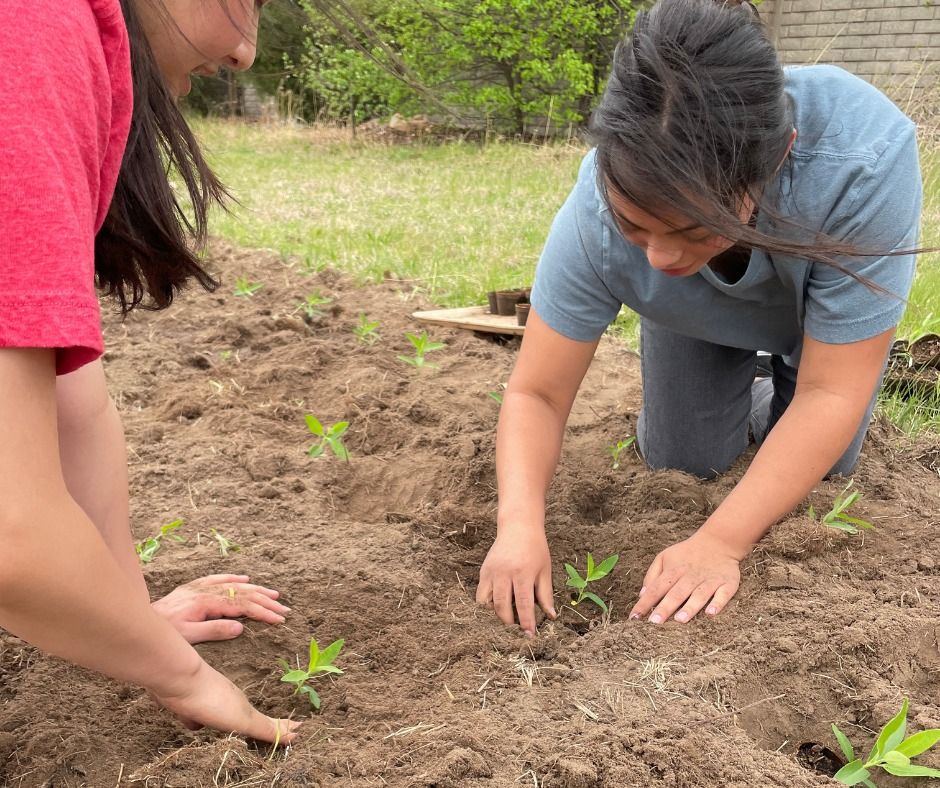
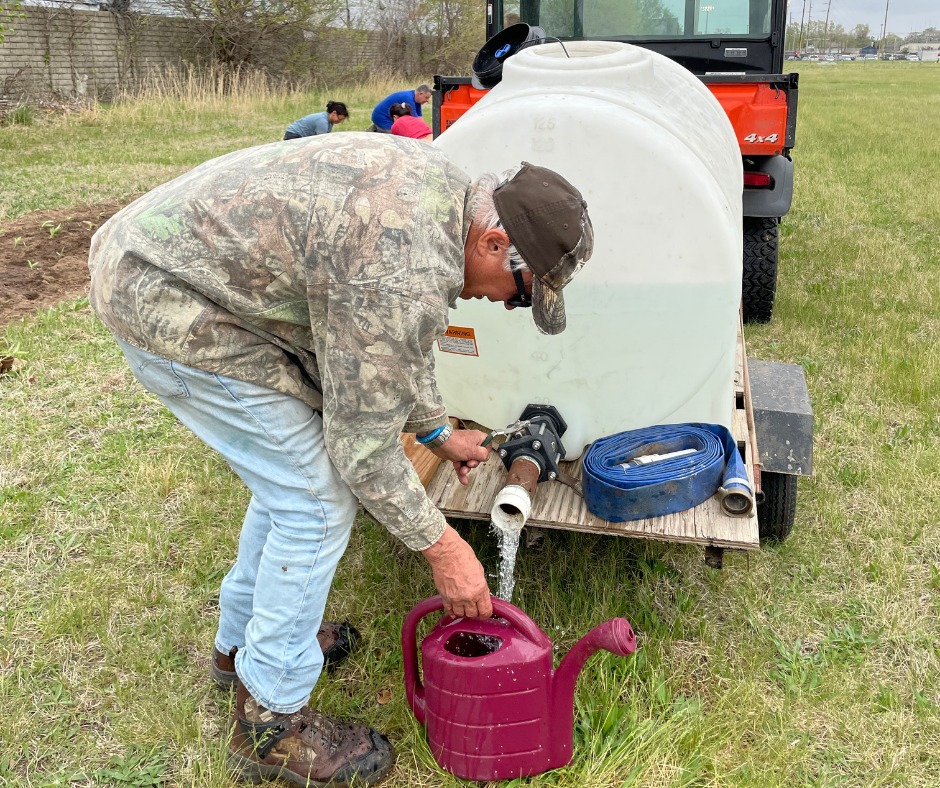

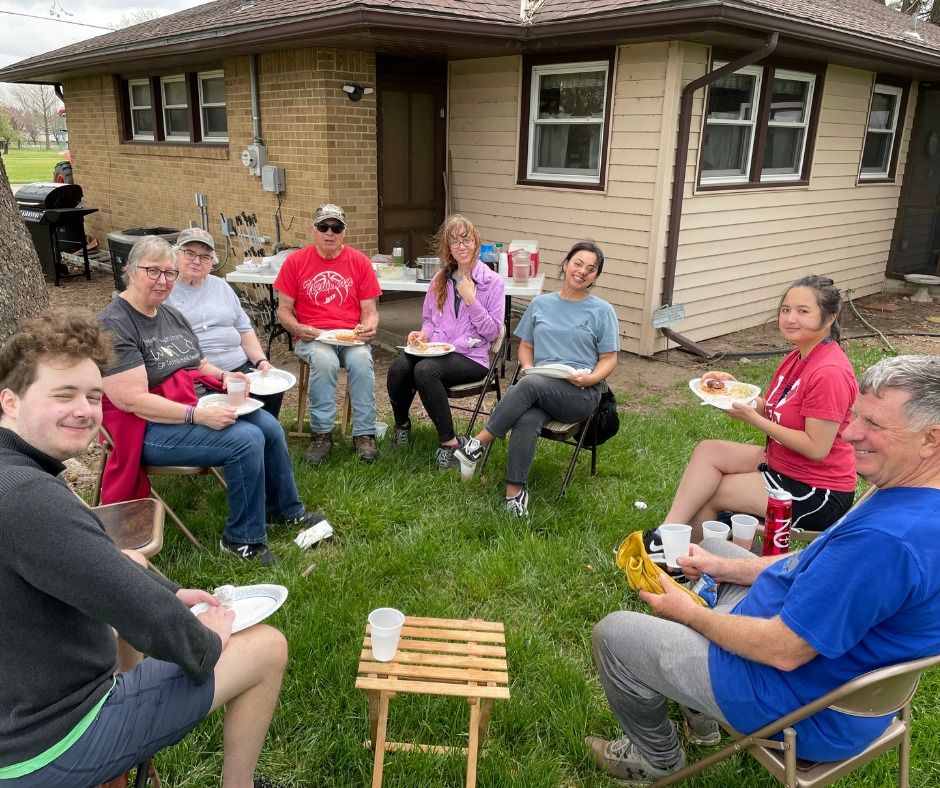
“Thanks to the Gardening Club and their help, we got a milkweed project going and it sure didn’t take the butterflies long to find the plants,” Welk said. “But I think that’s why I believe Laudato Si, Pope Francis’ encyclical, is probably a good formation for students while they’re at Newman. Maybe as they go forth, they’ll see themselves more and more as being called to be responsible stewards who should take care of the environment.”
For Welk, having a lifelong interest in birds has given him an avenue to “maintaining a good spirit.” To watch the indigo birds as they dive close to the ground, swooping and twirling through the air serves as a form of therapy and peace for Welk.
“Wouldn’t it be a sad world without purple martins around? What are we going to have around us to lift up our spirits when things don’t go well?”
Welk added, “We’re leaving this world for the next generation. I think we need to get beyond our own individual selfishness and say, ‘I want to leave this a better world for the people following me.’”
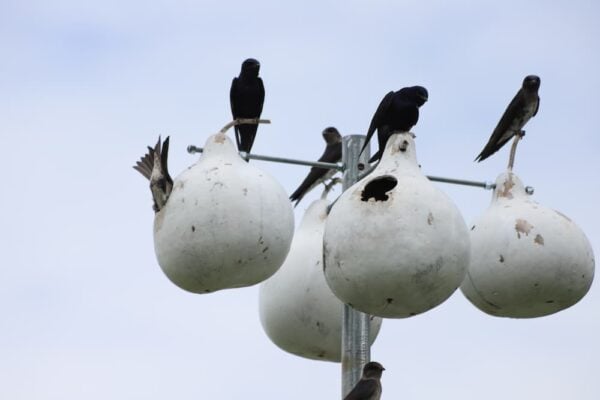
Welk welcomes anyone with an interest in the birds — students, faculty, staff, alumni and even passersby — to stop and watch as they fly to and from their on-campus gourd homes.
“They’re simply amazing,” he said.
Fun facts about purple martins
- Purple martins eat over a quarter trillion insects each year, including pests like invasive fire ants.
- Female birds want the best genes to pass on, making them very picky when choosing a mate.
- Due to habitat loss and invasive species, purple martins east of the Rocky Mountains are totally dependent on human housing.
- In Brazil, purple martins are called “Andorinha-azul” which means “blue swallow” in Portuguese.
- Migration from Erie to Amazon takes an average of four to six weeks and covers 5,000 miles one way.
- Purple martins are excellent flyers averaging 17 to 27 miles per hour and can reach speeds of 40 miles per hour.
- Old age for a martin is 4 to 5 years.
(Credit of Purple Martin Conservation Association)
Interested in helping support purple martins? Visit the Purple Martin Conservation Association to learn more.
Get involved
Interested in playing a role in the Laudato Si’ action plan at Newman University? Submit your email of interest to Sister Therese Wetta, ASC.

